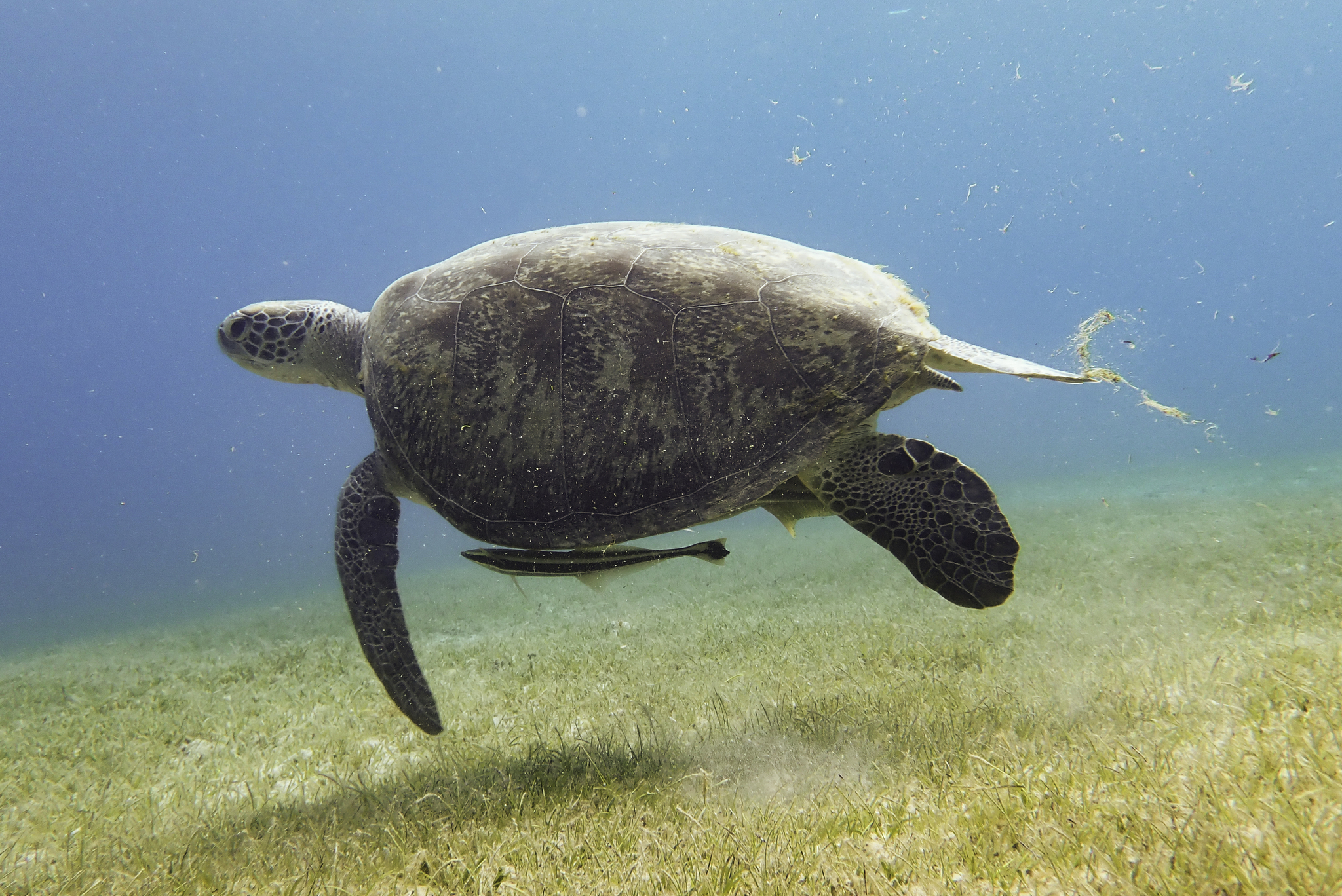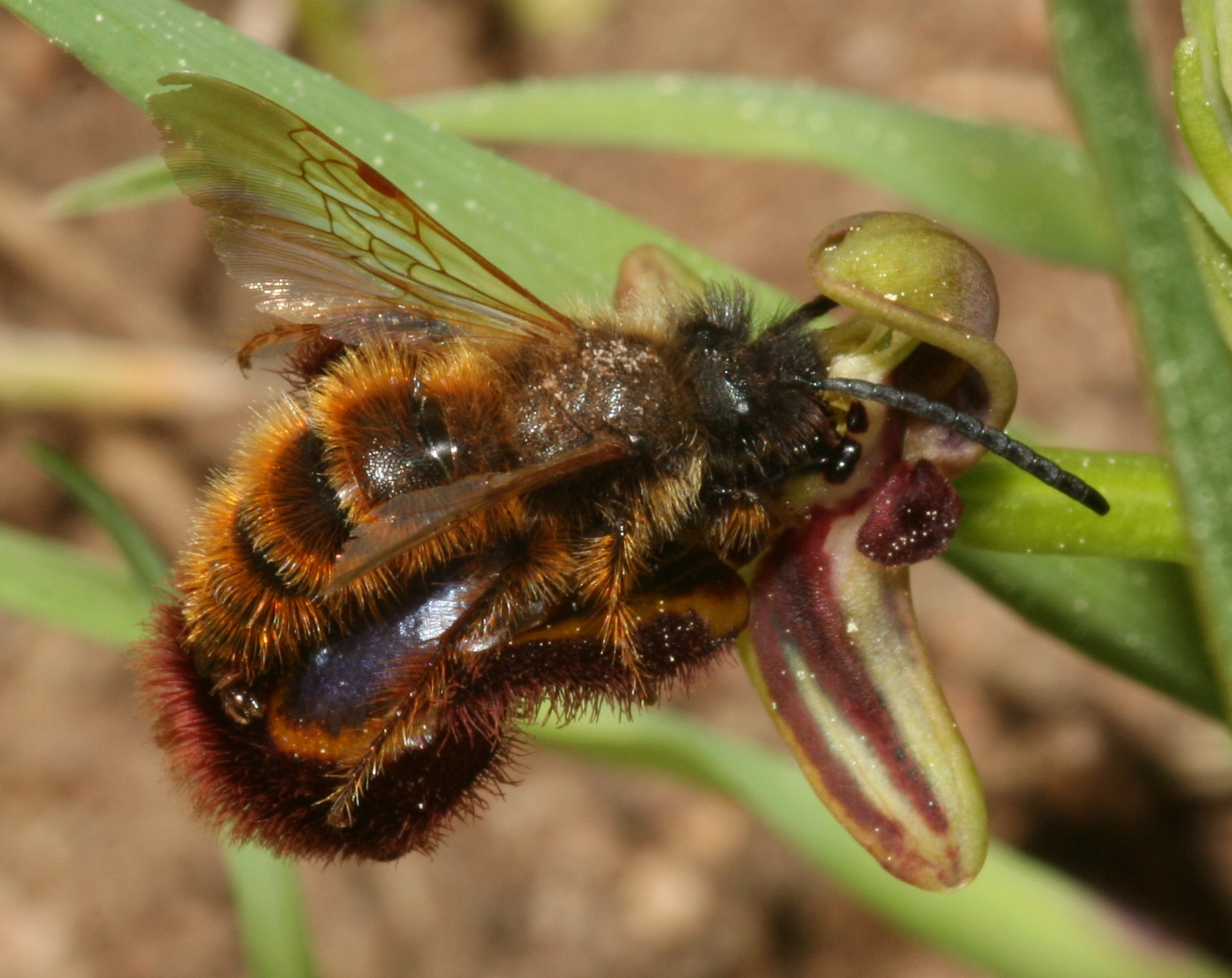|
Commensal
Commensalism is a long-term biological interaction (symbiosis) in which members of one species gain benefits while those of the other species neither benefit nor are harmed. This is in contrast with mutualism, in which both organisms benefit from each other; amensalism, where one is harmed while the other is unaffected; and parasitism, where one is harmed and the other benefits. The commensal (the species that benefits from the association) may obtain nutrients, shelter, support, or locomotion from the host species, which is substantially unaffected. The commensal relation is often between a larger host and a smaller commensal; the host organism is unmodified, whereas the commensal species may show great structural adaptation consistent with its habits, as in the remoras that ride attached to sharks and other fishes. Remoras feed on their hosts' fecal matter, while pilot fish feed on the leftovers of their hosts' meals. Numerous birds perch on bodies of large mammal herb ... [...More Info...] [...Related Items...] OR: [Wikipedia] [Google] [Baidu] |
Symbiosis
Symbiosis (Ancient Greek : living with, companionship < : together; and ''bíōsis'': living) is any type of a close and long-term biological interaction, between two organisms of different species. The two organisms, termed symbionts, can for example be in Mutualism (biology), mutualistic, commensalism, commensalistic, or parasitism, parasitic relationships. In 1879, Heinrich Anton de Bary defined symbiosis as "the living together of unlike organisms". The term is sometimes more exclusively used in a restricted, mutualistic sense, where both symbionts contribute to each other's subsistence. This means that they benefit each other in some way. Symbiosis can be ''obligate'' (or ''obligative''), which means that one, or both of the organisms depend on each other for survival, or ''facultative'' (optional), when they can also subsist independently. Symbiosis is also classified by physical attachment. Symbionts forming a single body live ... [...More Info...] [...Related Items...] OR: [Wikipedia] [Google] [Baidu] |
Domestication
Domestication is a multi-generational Mutualism (biology), mutualistic relationship in which an animal species, such as humans or leafcutter ants, takes over control and care of another species, such as sheep or fungi, to obtain from them a steady supply of resources, such as meat, milk, or labor. The process is gradual and geographically diffuse, based on trial and error. Domestication affected genes for behavior in animals, making them less aggressive. In plants, domestication affected genes for morphology, such as increasing seed size and stopping the Shattering (agriculture), shattering of cereal seedheads. Such changes both make domesticated organisms easier to handle and reduce their ability to survive in the wild. The first Domestication of animals, animal to be domesticated by humans was the domestication of the dog, dog, as a Commensalism, commensal, at least 15,000 years ago. Other animals, including goats, sheep, and cows, were domesticated around 11,000 years ago. A ... [...More Info...] [...Related Items...] OR: [Wikipedia] [Google] [Baidu] |
Biological Interaction
In ecology, a biological interaction is the effect that a pair of organisms living together in a community have on each other. They can be either of the same species (intraspecific interactions), or of different species (interspecific interactions). These effects may be short-term, or long-term, both often strongly influence the adaptation and evolution of the species involved. Biological interactions range from mutualism, beneficial to both partners, to competition, harmful to both partners. Interactions can be direct when physical contact is established or indirect, through intermediaries such as shared resources, territories, ecological services, metabolic waste, toxins or growth inhibitors. This type of relationship can be shown by net effect based on individual effects on both organisms arising out of relationship. Several recent studies have suggested non-trophic species interactions such as habitat modification and mutualisms can be important determinants of food web struc ... [...More Info...] [...Related Items...] OR: [Wikipedia] [Google] [Baidu] |
Host (biology)
In biology and medicine, a host is a larger organism that harbours a smaller organism; whether a parasite, parasitic, a mutualism (biology), mutualistic, or a commensalism, commensalist ''guest'' (symbiont). The guest is typically provided with nourishment and shelter. Examples include animals playing host to parasitic worms (e.g. nematodes), cell (biology), cells harbouring pathogenic (disease-causing) viruses, or a Fabaceae, bean plant hosting mutualistic (helpful) Rhizobia, nitrogen-fixing bacteria. More specifically in botany, a host plant supplies nutrient, food resources to micropredators, which have an evolutionarily stable strategy, evolutionarily stable relationship with their hosts similar to ectoparasitism. The host range is the collection of hosts that an organism can use as a partner. Symbiosis Symbiosis spans a wide variety of possible relationships between organisms, differing in their permanence and their effects on the two parties. If one of the partners in an ... [...More Info...] [...Related Items...] OR: [Wikipedia] [Google] [Baidu] |
Mutualism (biology)
Mutualism describes the ecological Biological interaction, interaction between two or more species where each species has a net benefit. Mutualism is a common type of Ecology, ecological interaction. Prominent examples are: * the nutrient exchange between vascular plants and mycorrhizal fungi, * the Fertilisation, fertilization of flowering plants by pollinators, * the ways plants use fruits and edible seeds to encourage animal aid in seed dispersal, and * the way corals become photosynthetic with the help of the microorganism zooxanthellae. Mutualism can be contrasted with interspecific competition, in which each species experiences ''reduced'' fitness, and Cheating (biology), exploitation, and with parasitism, in which one species benefits at the expense of the other. However, mutualism may evolve from interactions that began with imbalanced benefits, such as parasitism. The term ''mutualism'' was introduced by Pierre-Joseph van Beneden in his 1876 book ''Animal Parasites an ... [...More Info...] [...Related Items...] OR: [Wikipedia] [Google] [Baidu] |
Synanthrope
A synanthrope (from ancient Greek σύν ''sýn'' "together, with" and ἄνθρωπος ''ánthrōpos'' "man") is an organism that evolved to live near humans and benefit from human settlements and their environmental modifications (see also anthropophilia for animals who live close to humans as parasites). The term includes many animals and plants regarded as pests or weeds, but does not include domesticated species. Common synanthrope habitats include houses, sheds and barns, non-building structures, gardens, parks, farms, road verges and rubbish dumps. Zoology Examples of synanthropes are various species of insects (ants, lice, bedbugs, silverfish, cockroaches, etc.), myriapods (millipedes and centipedes, notably the house centipede), arachnids (spiders, dust mite, etc.), common house gecko, birds such as house sparrows, gulls, rock doves (pigeons), crows and magpies, honeyguides, swallows and other passerines, various rodent species (especially rats and house mice), ... [...More Info...] [...Related Items...] OR: [Wikipedia] [Google] [Baidu] |
Echeneis Naucrates 241647485
An echeneis () is a legendary creature; a small fish that was said to latch on to ships, holding them back. Pliny the Elder (1st century AD) also said of the echeneis: "It has a disgraceful repute, as being employed in love philtres, and for the purpose of retarding judgments and legal proceedings—evil properties, which are only compensated by a single merit that it possesses—it is good for staying fluxes of the womb in pregnant women, and preserves the fœtus up to birth: it is never used, however, for food." In his Quaestiones Convivales, Plutarch gives a detailed description of the creature. They were said to be found in the Indian Ocean.Echeneis at the Medieval Bestiary Accessed 28 February 2016Gudger, E. W. (1918) [...More Info...] [...Related Items...] OR: [Wikipedia] [Google] [Baidu] |
Coevolution
In biology, coevolution occurs when two or more species reciprocally affect each other's evolution through the process of natural selection. The term sometimes is used for two traits in the same species affecting each other's evolution, as well as gene-culture coevolution. Charles Darwin mentioned evolutionary interactions between flowering plants and insects in ''On the Origin of Species'' (1859). Although he did not use the word coevolution, he suggested how plants and insects could evolve through reciprocal evolutionary changes. Naturalists in the late 1800s studied other examples of how interactions among species could result in reciprocal evolutionary change. Beginning in the 1940s, plant pathologists developed breeding programs that were examples of human-induced coevolution. Development of new crop plant varieties that were resistant to some diseases favored rapid evolution in pathogen populations to overcome those plant defenses. That, in turn, required the development of ... [...More Info...] [...Related Items...] OR: [Wikipedia] [Google] [Baidu] |
Rock Dove - Natures Pics
Rock most often refers to: * Rock (geology), a naturally occurring solid aggregate of minerals or mineraloids * Rock music, a genre of popular music Rock or Rocks may also refer to: Places United Kingdom * Rock, Caerphilly, a location in Wales * Rock, Cornwall, a village in England * Rock, County Tyrone, a village in Northern Ireland * Rock, Devon, a location in England * Rock, Neath Port Talbot, a location in Wales * Rock, Northumberland, a village in England * Rock, Somerset, a location in England * Rock, West Sussex, a hamlet in Washington, England * Rock, Worcestershire, a village and civil parish in England United States * Rock, Kansas, an unincorporated community * Rock, Michigan, an unincorporated community * Rock, West Virginia, an unincorporated community * Rock, Rock County, Wisconsin, a town in southern Wisconsin * Rock, Wood County, Wisconsin, a town in central Wisconsin Elsewhere * Corregidor, an island in the Philippines also known as "The Rock" * Jamaica, an ... [...More Info...] [...Related Items...] OR: [Wikipedia] [Google] [Baidu] |
Fight-or-flight Response
The fight-or-flight or the fight-flight-freeze-or-fawn (also called hyperarousal or the acute stress response) is a physiological reaction that occurs in response to a perceived harmful event, attack, or threat to survival. It was first described by Walter Bradford Cannon in 1915. His theory states that animals react to threats with a general discharge of the sympathetic nervous system, preparing the animal for fighting or fleeing. More specifically, the adrenal medulla produces a hormonal cascade that results in the secretion of catecholamines, especially norepinephrine and epinephrine. The hormones estrogen, testosterone, and cortisol, as well as the neurotransmitters dopamine and serotonin, also affect how organisms react to stress. The hormone osteocalcin might also play a part. This response is recognised as the first stage of the general adaptation syndrome that regulates stress responses among vertebrates and other organisms. Name Originally understood as the "figh ... [...More Info...] [...Related Items...] OR: [Wikipedia] [Google] [Baidu] |
Pleistocene
The Pleistocene ( ; referred to colloquially as the ''ice age, Ice Age'') is the geological epoch (geology), epoch that lasted from to 11,700 years ago, spanning the Earth's most recent period of repeated glaciations. Before a change was finally confirmed in 2009 by the International Union of Geological Sciences, the cutoff of the Pleistocene and the preceding Pliocene was regarded as being 1.806 million years Before Present (BP). Publications from earlier years may use either definition of the period. The end of the Pleistocene corresponds with the end of the last glacial period and also with the end of the Paleolithic age used in archaeology. The name is a combination of Ancient Greek () 'most' and (; Latinized as ) 'new'. The aridification and cooling trends of the preceding Neogene were continued in the Pleistocene. The climate was strongly variable depending on the glacial cycle, oscillating between cold Glacial period, glacial periods and warmer Interglacial, int ... [...More Info...] [...Related Items...] OR: [Wikipedia] [Google] [Baidu] |







